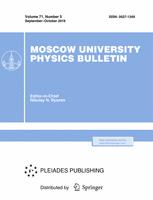In recent decades, significant experimental progress has been achieved in studying decays of hadrons containing heavy quarks. In particular, the branching fractions of the exclusive semileptonic and rare decays of both charm and bottom mesons and baryons were measured. In this paper, we present the results of a study of the rare decay of $\Xi_{b}^-\rightarrow\Xi^-l^+l^-$. The form factors parameterizing the weak current matrix elements between baryonic states are calculated within the framework of the relativistic quark model based on the quasipotential approach and quantum chromodynamics. The calculation of the differential and total decay widths, as well as the asymmetries and polarization characteristics of the decays, is carried out on the basis of the helicity formalism. The calculations were performed both with the account of the long-range contributions of charmonium vector resonances to the Wilson coefficients and without their account. Predictions for decay widths for 3 generations of leptons have been obtained.
13.30.Ce Leptonic, semileptonic, and radiative decays
14.20.Dh Protons and neutrons
$^1$Federal Research Center «Computer Science and Control», Russian Academy of Sciences\
$^2$Department of Quantum Theory and High Energy Physics, Faculty of Physics, M.V.Lomonosov Moscow State University.



